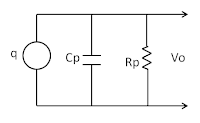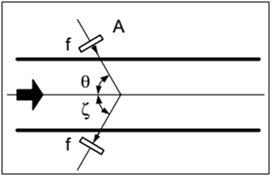Electrical charges are
produced on the opposite surfaces of some crystals when subjected to force or
torsion. The electrical charge produced is proportional to the effective force.
By application of force, dimension of the crystal changes causing a
displacement of charge. Piezoelectric effect is reversible, i.e. if a varying
potential is applied to the crystal, it will change the dimension of the
crystal along a certain axis.
It must be remembered that
a piezoelectric crystal can convert a changing force into a changing electrical
signal, whereas a steady-state force produces no electrical response.
Piezo-electric crystals
are available in two forms- natural and man-made. Quartz and ceramic are
examples of naturally available piezo-electric crystals whereas Rochelle salts,
Lithium sulphate, Ammonium dihydrogen phosphate etc are examples of man-made
crystals. Quartz is considered as one of the most stable piezo-electric crystal
and is
known for its ability
to perform accurate measurement for time and frequency. Its output is independent of temperature variation. They have low voltage sensitivity but high charge sensitivity.
to perform accurate measurement for time and frequency. Its output is independent of temperature variation. They have low voltage sensitivity but high charge sensitivity.
Description of operation
The
piezoelectric effect causes a realignment and accumulation of positively and
negatively charged electrical particles, or ions, at the opposed surfaces of a crystal
lattice, when that lattice undergoes stress. The number of ions that accumulate
is directly proportional to the amplitude of the imposed stress or force.
PE
transducers use a spring-mass system to generate a force proportional to the
amplitude and frequency of the input quantity. The stress imposed upon the
piezoelectric material is the direct result of a physical input such as
acceleration, force, or pressure. To accomplish this, a mass is attached to the
crystal, which, when accelerated, causes force to act upon the crystal. The
mass, also known as a seismic mass, creates a force directly proportional to
acceleration according to Newton’s law of motion, F=ma.
Thin metallic electrodes collect the accumulated ions. Small lead wires interconnect
the electrodes to an electrical connector or feed-through, to which cabling is attached.
An advantage of PE materials is that they are self-generating and require no external power source.
A piezo-elecric crystal
can be considered as charge generator and a capacitor. External force generates
a charge and this charge appears as voltage across the electrodes.
The
voltage V=Q/C . The voltage polarity depends on the
direction of applied force.
The amount and polarity
of charge produced is proportional to the magnitude and direction of force.
Charge Q = kq
x F Coulomb, (1)
where kq is
the charge sensitivity of the crystal; C/N and F is applied force; N
From Hooke’s Law, the
Young’s modulus Y of the crystal is given as
Where A = area of crystal; t = thickness of crystal; Y = Young’s modulus; A = area of crystal;
From above equations,
The
voltage output Vo is given as
Where
C is the capacitance between the electrodes;
From above equations,
Where P = F/A= stress or
pressure, N/m2
Electrical
analysis of Piezo-electric crystals
Piezo-electric crystal
can be considered a charge generator. The amount of charge is q=
kq
x F.
The charge appears
across capacitance Cp of the crystal. Rp is the leakage
resistance of the crystal. The equivalent circuit with voltage source id shown
above. The voltage
V=q/Cp = kq
x F/Cp
If a load is connected
at the output, the load capacitance CL and resistance RL
will make the loaded circuit as below.
We can consider Rp as
very large (open).
The equivalent impedance of load is
The total impedance is
Displacement
measurement using Piezo-crystal
At steady state when ω=0,
M=0. Hence piezo-crystals are not suitable for static measurements.
Uses
They are used in numerous applications such as environmental stress
screening, vibration control, active vibration reduction, flight testing, wind
tunnel testing, structural testing, modal analysis, seismic vibration, package
testing, shock, motion and attitude detection and stabilization, ride quality
response and simulation, acoustic testing and noise, harshness and vibration
testing. Fast response,
ruggedness, high stiffness, extended range, and the ability to also measure
quasi-static forces are standard features associated with PE sensors.
Gate Questions
GATE-2008
GATE-2013
GATE-2014
GATE-2018
Gate Questions
GATE-2008
GATE-2012
GATE-2014












































